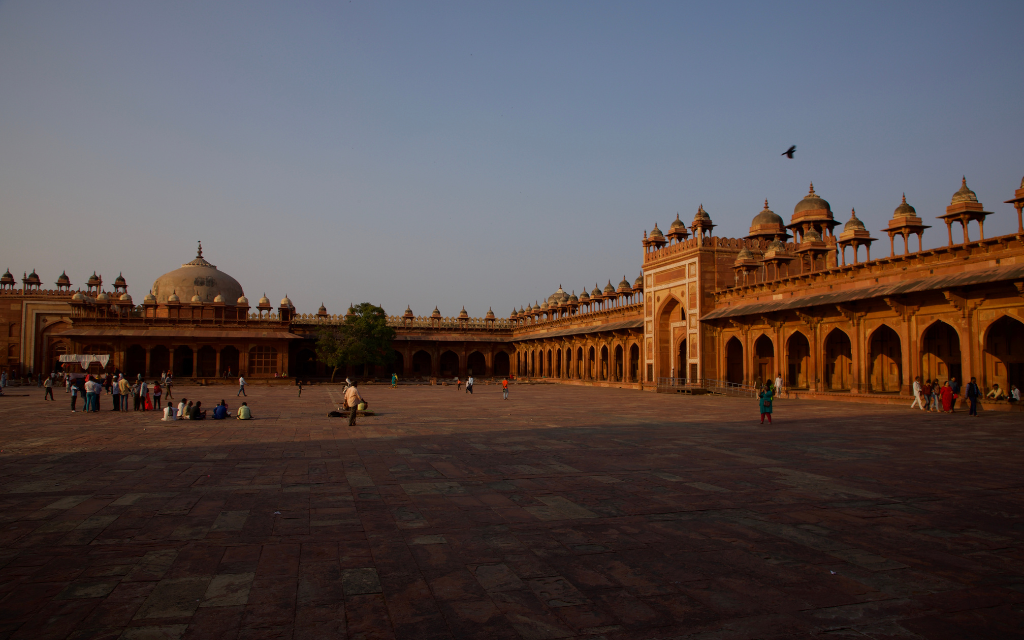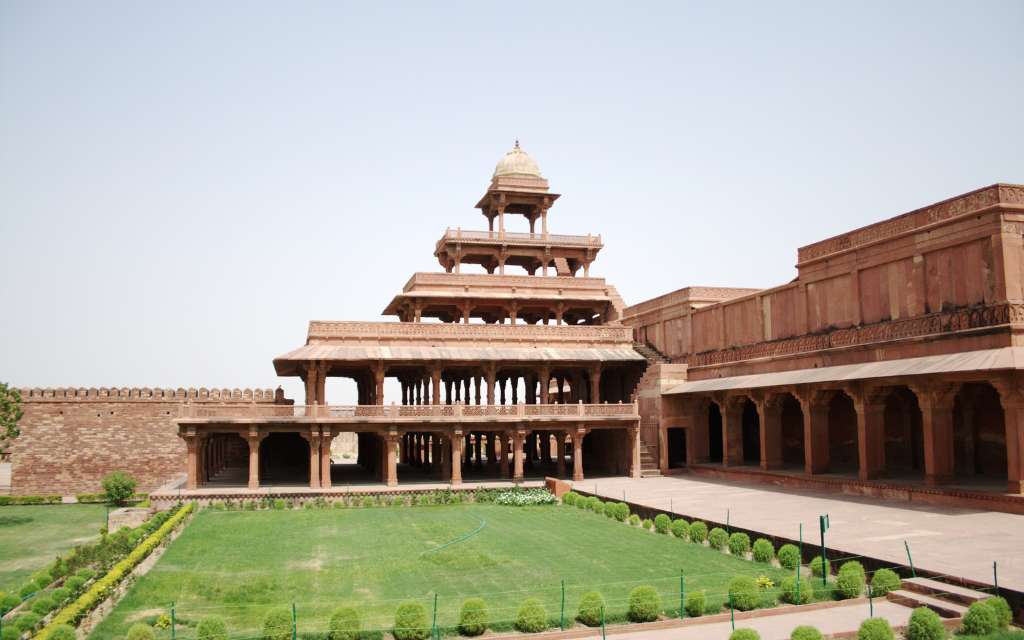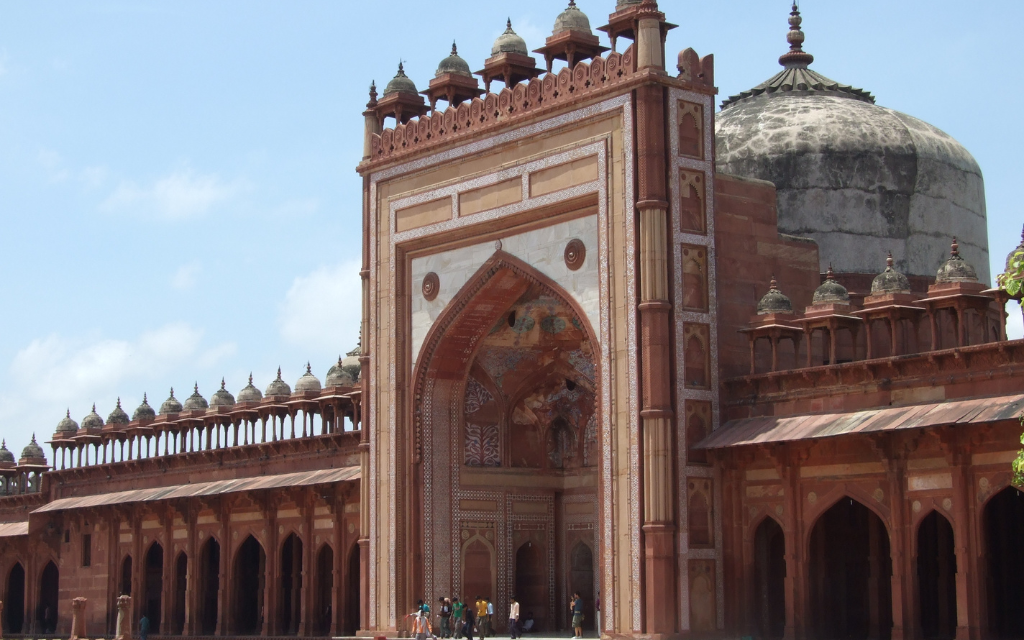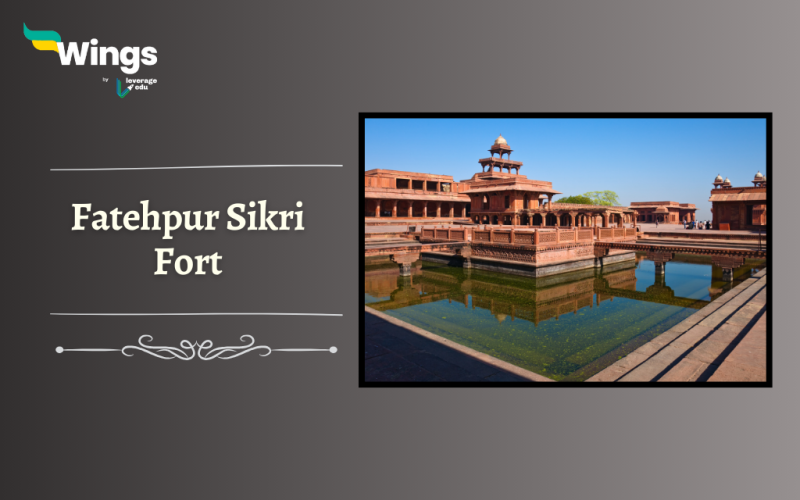India is a land known for its rich history and cultural heritage. One such architectural wonder that adds as a magnificent chapter to the grandeur of the Mughal era is the history of Fatehpur Sikri Fort. Situated in the state of Uttar Pradesh, this magnificent structure was built by Mughal Emperor Akbar in the 16th century. Let’s delve into the history and explore the fascinating features of this historical site.
| Built by | Mughal Emperor Akbar |
| Time Period | Construction began in 1569 and the city was completed around 1574 |
| Location | Agra, Uttar Pradesh |
| Timings | 6:00 am to 5:30 pm; except Friday |
| Entry Fee for fort | ₹ 40 for Indians; ₹ 550 for foreigners |
| Free Entry for children below 15 years | |
| Architectural Style | Combination of Mughal and Indian Style |
| Status | UNESCO World Heritage Site |
Contents

History of Fatehpur Sikri Fort
- Fatehpur Sikri was founded in 1569 by the great Mughal Emperor Akbar.
- Akbar founded the city of Sikri, inspired by a prophecy from the Sufi saint Shaikh Salim Chishti.
- The city thrived as the Mughal capital from 1571 to 1585 for a period of nearly 14 years.
- Akbar renamed it “City of Victory” after a military win in 1573.
- By 1585, water scarcity and political priorities led to the city’s abandonment. Akbar relocated the capital to Lahore and then Agra. Fatehpur Sikri became a ghost town by 1610.
- Colonial rulers briefly revived the site as an administrative centre (1803-1850).
- Monument restorations began in 1815 under British rule.
Also Read – Red Fort History: Features, Facts, Timings & More
Features of Fatehpur Sikri Fort
Today, Fatehpur Sikri stands as a stunning architectural legacy. Its red sandstone structures blend Hindu and Islamic influences. The fort was strategically located to have easy access to the interiors of India and Persia.
| Feature | Description |
| Fortified City Walls | A resident of the famous Akbar’s navratna, Birbal. |
| Buland Darwaza | The “Gate of Grandeur,” towers 54 meters and showcases magnificent Indo-Islamic architecture. Buland Darwaza is also known as the Gate of Magnificence, it was erected in 1602 to commemorate Akbar’s successful campaign in Gujarat. |
| Jama Masjid | Fatehpur Sikri is home to the Jama Masjid, one of the largest mosques in India. Built-in 1571, this mosque showcases the perfect blend of Persian and Indian architectural styles. It has a central courtyard with a large water tank for ablution. |
| Diwan-i-Khas (Hall of Private Audience) | The Diwan-i-Khas, or the Hall of Private Audience, is a stunning structure within the fort. This elegant building was where Emperor Akbar held private meetings with his courtiers. The central pillar of the hall is adorned with exquisite carving, depicting a lotus flower. |
| Panch Mahal | The Panch Mahal is also known as the Five-Storey Palace. A pavilion that offers a panoramic view was once used for musical performances and leisure. |
| Tomb of Shaikh Salim Chishti | A beautiful white marble structure dedicated to a revered Sufi saint attracts pilgrims and visitors. |
| Buland Darwaza Echo Chamber | The chamber gives a mystic touch where whispers echo 27 times due to clever architectural design. |
| Harem Quarters | These quarters give a glimpse into the lives of the emperor’s wives and their intricate courtyard designs. |
| Jodha Bai’s Palace | This palace was built for Jodha Bai, the Hindu wife of Emperor Akbar. It is known for its unique blend of Rajput and Mughal architectural styles. The palace has a spacious courtyard. |
| Caravanserai | A large rest house for traders and travellers, highlighting the city’s role in trade and commerce. |
| Anup Talao | It is believed Tansen, the great classical singer used to perform in the artificial water body. |
| Birbal’s House | A resident of the famous Akbar’s navratna, Birbal. |
| Daftar Khana | The official record room of Akbar |
Other things to see include the Hiran Minar, Karkhana, Pachisi court, Hujra-i-Anup Talao, Naqqar Khana, Khazana Mahal, etc
Also Read – Agra Fort History: Features, Facts, Timings & More
Fascinating Facts About Fatehpur Sikri
- The city was named Fatehpur Sikri, meaning “City of Victory,” after Akbar’s victorious campaign in Gujarat.
- Fatehpur Sikri has eight gates, namely Delhi Gate, Agra Gate, Lla Gate, Ajmeri Gate and Gwalior Gate, etc
- It is regarded as the first planned city in India, built by the Mughals.
- The fort complex was declared a UNESCO World Heritage Site in 1986.
- Fatehpur Sikri was abandoned due to the scarcity of water, which made it unsustainable for habitation.
- Mughal Emperor Jahangir, the son of Akbar, is believed to have lived in the fort for three months.
- English traveller of the 16th century, Ralph Fitch quotes that the city of Fatehpur Sikri in the 16th century was much larger and more populous than London.

Timings of Fatehpur Sikri Fort
The timings of visiting the complex are –
| Purpose | Timings |
| Entry | 6 am to 5:30 pm |
| Week Entry | Only closed on Fridays |

Other Attractions near Fatehpur Sikri
Here are some other attractions near Fatehpur Sikri:
| Taj Mahal | Wildlife SOS Bear Sanctuary |
| Itmad-ud-Dulah’s Tomb | Sadar Bazaar |
| The Red Taj | Mehtab Bagh |
| Sikandra Fort and Akbar’s Tomb | Mughal Gardens |
Fatehpur Sikri Fort adds to the allure of the architectural brilliance and cultural diversity of the Mughal era. This majestic structure, with its intricate designs and awe-inspiring monuments, provides a glimpse into the grandeur of the past.
FAQs
Fatehpur Sikri was built by Emperor Akbar in 1569 to honor the Sufi saint Shaikh Salim Chishti, who predicted the birth of Akbar’s heir.
It is located in the Agra district of Uttar Pradesh, India, around 40 kilometers west of Agra city.
Major attractions include the Buland Darwaza, Jama Masjid, Tomb of Salim Chishti, Panch Mahal, Diwan-i-Khas, and Jodha Bai’s Palace.
Yes, it was declared a UNESCO World Heritage Site in 1986 for its architectural and historical significance.
The city was abandoned mainly due to water scarcity and Akbar’s decision to move his capital for strategic reasons.
Relevant Blogs
| Fun Facts About Delhi You Won’t Believe Are True | Amer Fort History |
| 5 Most Famous Types Of Paintings in India | Traditional Art Forms of India |
| All the Names of India Throughout History | Golconda Fort |
| History of Indian Art | Bhangarh Fort History |
That’s all about the history of Fatehpur Sikri Fort! If you want to know more about topics like this, then visit our general knowledge page! Alternatively, you can also read our blog on general knowledge for competitive exams!
 One app for all your study abroad needs
One app for all your study abroad needs














